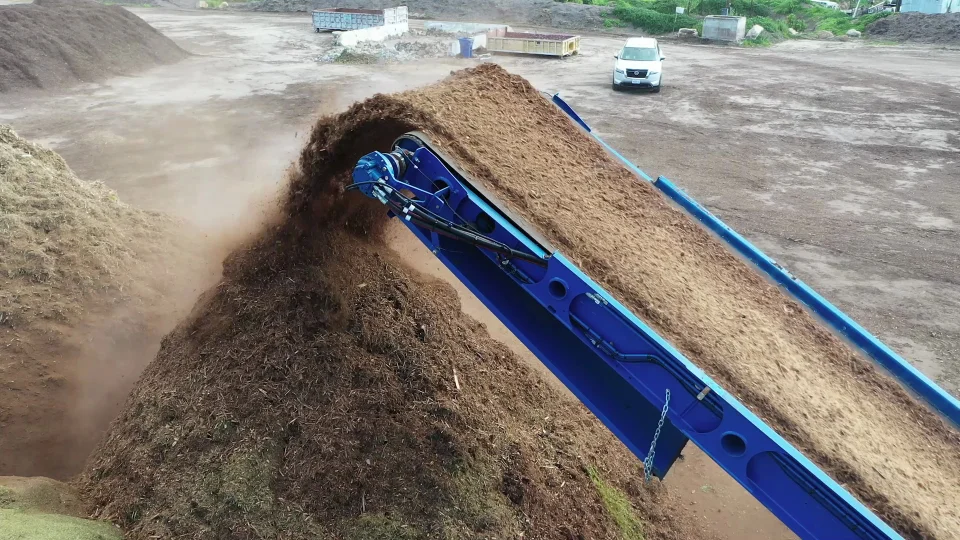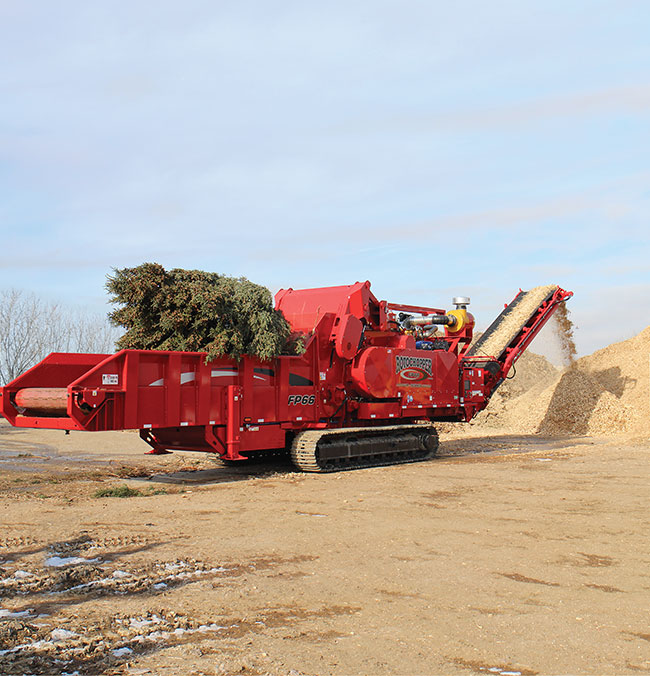Proven Efficiency: Leading Brand Names of Horizontal Grinder
Proven Efficiency: Leading Brand Names of Horizontal Grinder
Blog Article
Achieve Price Cost Savings and Greater Result With a Straight Mill for Recycling
One such solution that has obtained grip in the recycling industry is the use of horizontal grinders. What specifically are the advantages of using a horizontal mill? In this discussion, we will check out these concerns and dig right into real-life case research studies that highlight the remarkable outcomes attained by taking on a horizontal mill.
Benefits of Utilizing a Straight Mill
Using a straight mill provides numerous benefits in the world of recycling and waste monitoring. Whether it is timber waste, construction debris, or even asphalt tiles, a straight grinder can successfully grind these materials right into smaller sized, much more convenient pieces.
One more benefit of using a straight grinder is its high manufacturing capability. These devices are designed to manage large quantities of material, allowing for faster handling times and enhanced result. This is particularly advantageous for reusing facilities and waste management business that require to process huge quantities of waste each day. By making the most of manufacturing capacity, a straight grinder can boost operational performance and ultimately decrease prices.

Furthermore, horizontal grinders provide the benefit of producing a constant output. With flexible screens and rotors, drivers can easily manage the size and top quality of the processed material. This uniformity is essential for markets that depend on recycled materials, such as biomass power manufacturing or mulch manufacturing. By creating a consistent end product, straight mills guarantee that the recycled products fulfill the wanted specs and can be efficiently utilized in numerous applications.
Secret Functions of a Horizontal Mill
A horizontal grinder is outfitted with several key features that enhance its performance and performance in waste management and recycling procedures. Among the major attributes is the powerful engine that drives the mill. These engines are typically diesel-powered and provide the necessary horsepower to shred and grind various products successfully. The engine's high torque enables the grinder to deal with difficult products such as stumps, logs, and building and construction waste effortlessly.
An additional crucial function of a horizontal mill is the big feed opening. This allows for the reliable and continual feeding of cumbersome products right into the mill. The broad opening reduces the demand for manual work in sorting and pre-processing the waste, conserving time and boosting productivity.
In addition, horizontal mills are created with adjustable displays or grates. These screens establish the size of the end product by regulating the bit size of the shredded material. The capacity to readjust the display allows operators to generate different dimensions of completed products, providing to details recycling or waste monitoring requirements.
Furthermore, horizontal grinders often come outfitted with a magnetic separator. This function aids in the elimination of ferrous products from the waste stream, making sure that the last product is devoid of pollutants. The magnetic separator enhances both the high quality and bankability of the recycled materials.
How to Select the Right Horizontal Grinder
Choosing the ideal horizontal grinder needs careful factor to consider of several aspects to make certain optimal performance and cost-effectiveness in waste monitoring and recycling procedures. The initial factor to think about is the dimension and sort of material to be refined. Various grinders are developed to manage certain materials, such as timber, eco-friendly waste, or construction debris. It is crucial to pick a grinder that can efficiently manage the desired feedstock without causing extreme damage.
One more factor to consider is the desired result dimension (horizontal grinder). Mills include different display sizes that figure out the final product size. It is essential to choose a mill that can generate the preferred bit size for the intended application, whether it is for generating compost, biomass fuel, or animal bed linens
The source of power is also an essential consideration. Horizontal mills can be powered by diesel motor, electrical motors, or crossbreed systems. The selection of source of power depends on elements such as accessibility of electricity, price of gas, and environmental regulations.
In addition, the capacity and throughput of the mill must be thought about. The size of the procedure and the expected quantity of product to be processed will certainly dictate the required ability of the device.
Last but not least, it is vital to take into consideration the general sturdiness and reliability of the mill. Try to find a reputable supplier with a track record of generating premium equipment that can withstand the demands of the recycling sector.
Tips for Maximizing Expense Financial Savings With a Horizontal Mill
To optimize expense financial savings and operational performance with a straight grinder, it is essential to carry out effective techniques that make the most of performance and decrease costs. Below are some suggestions to aid you achieve these goals:
Routine Maintenance: check here Conduct routine assessments and upkeep on your grinder to ensure it is running at peak efficiency. This will help avoid breakdowns and pricey repair work, in addition to expand the life-span of your equipment.
Efficient Material Handling: Correctly feeding the mill with the right amount of material is important for accomplishing cost financial savings. Overloading the mill can lead to raised gas intake and wear and tear on the equipment.
Ideal Grinding Strategies: Trying out various grinding strategies to discover the most efficient method for your specific materials. Readjusting the mill's settings, such as rotor rate and display size, can help attain the wanted bit dimension while lessening energy consumption.
Correct Disposal of Residual Product: Deal With the residual material from the grinding procedure in a affordable and eco-friendly manner. Take into consideration recycling or repurposing the by-products to lower waste and possibly create extra income.
Study: Real-Life Examples of Cost Cost Savings and Greater Outcome With a Straight Grinder
Several business have effectively achieved substantial cost financial savings and enhanced result by using a horizontal mill for their recycling procedures. One such case research study entails a waste management firm that utilized a straight mill to procedure timber waste. By applying this technology, they were able to minimize transportation expenses by grinding the waste on-site, eliminating the need for multiple trips to a far-off land fill. Furthermore, the horizontal grinder raised their output by enabling them to refine larger quantities of timber waste in a shorter you can check here amount of time.
One more instance research study entails a building business that made use of a straight mill to reuse concrete and asphalt waste from their demolition projects - horizontal grinder. By grinding the waste material into recyclable accumulation, they had the ability to save on disposal prices and acquisition less virgin products for their future projects. This not just resulted in significant price savings but also decreased their ecological impact
Additionally, a reusing facility that specialized in processing natural waste utilized a horizontal grinder to grind and compost yard waste. This allowed them to increase their processing capacity and produce higher-quality garden compost in a much shorter amount of time. Because of this, they had the ability to fulfill the expanding need for their compost products while achieving considerable expense savings.
These real-life examples demonstrate the performance and advantages of using a horizontal grinder for reusing procedures. The expense savings and increased outcome obtained by these business highlight the possibility of this modern technology in improving efficiency and sustainability in various sectors.
Verdict
To conclude, using a horizontal grinder for reusing deals various benefits such as price savings and greater output. When choosing the right one for details requirements, the essential features of a straight grinder must be considered. By implementing ideas for optimizing cost financial savings, companies can better improve their performance and earnings. Real-life study showcase the efficiency of straight grinders in attaining significant price savings and boosted result. In general, incorporating this devices right into recycling processes can bring about improved sustainability and monetary gains.

Report this page